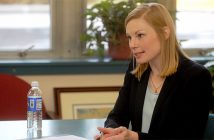
Washington state’s Supreme Court ruled charter schools unconstitutional last September, but new data released this week shows that charter school students are outpacing their peers in reading and math.
This information was published by the Washington State Charter Schools Association, which received individual summaries from each of the state’s eight charter schools. The scores came from tests developed by schools or standardized assessments, and compared the progress 1,100 students made from the beginning of the school year to its midpoint.
At Seattle’s Summit Sierra and Tacoma’s Summit Olympus, ninth graders began the school year three or four years behind their peers, and yet outperformed them on the Measures of Academic Progress assessment. Summit Sierra scored 40% better than the national reading average and double the national math average, reports Kate Stringer of The 74 Million. Summit Olympus students doubled the average growth in reading and tripled it in math.
At Destiny Middle School, the Scholastic Reading Inventory scored 80% of students behind grade level in reading, but by the third month of school one-third of them had grown one to two reading levels.
At Rainier Prep Charter School in West Seattle, students grew one grade level in the first half of the school year, as measured by the STAR reading test.
The Spokane International Academy has been recognized by the Lexia reading program as a role model for national implementation. Head of School Travis Franklin reports that specialized reading groups and quality teachers are the key ingredients to the school’s success. He said:
We set out to open schools that are different. We’re doing what we said we would do. Why would you close schools that are doing good for kids?
At Excel Public Charter School, students who began the year two to three years behind expected reading level are on track to make a year and a half of progress, according to in-house assessments.
These successful programs seem to be reaching the students who need it most: two-thirds of the state’s charter students are low-income, and 70% are students of color. A national study found Seattle to have the largest achievement gaps between racial and economic groups, and charter schools may be helping to bridge this gap.
Amelia Hamilton of Watchdog Washington quoted the Washington State Charter Schools Association’s spokesperson Maggie Meyers:
We’ll be sharing this data with legislators as evidence of why they shouldn’t be closing schools that are closing gaps for our students.
To keep the state’s charter schools open, a bill would have to be passed during this legislative session. A little more than a month remains before the deadline.
Those in support of the closing of charter schools argue that the problem is schools using public funding without public oversight, writes Dora Taylor of the Progressive. She also argues that charter schools place a focus on profit by encouraging blended learning classes that use less of the school’s resources and fewer personnel.
Washington Education Association spokesperson Linda Mullen said:
We’re happy with any student improvements, of course, but the schools are unconstitutional themselves because they take money away from publicly funded schools and give it to privately operated ones.




